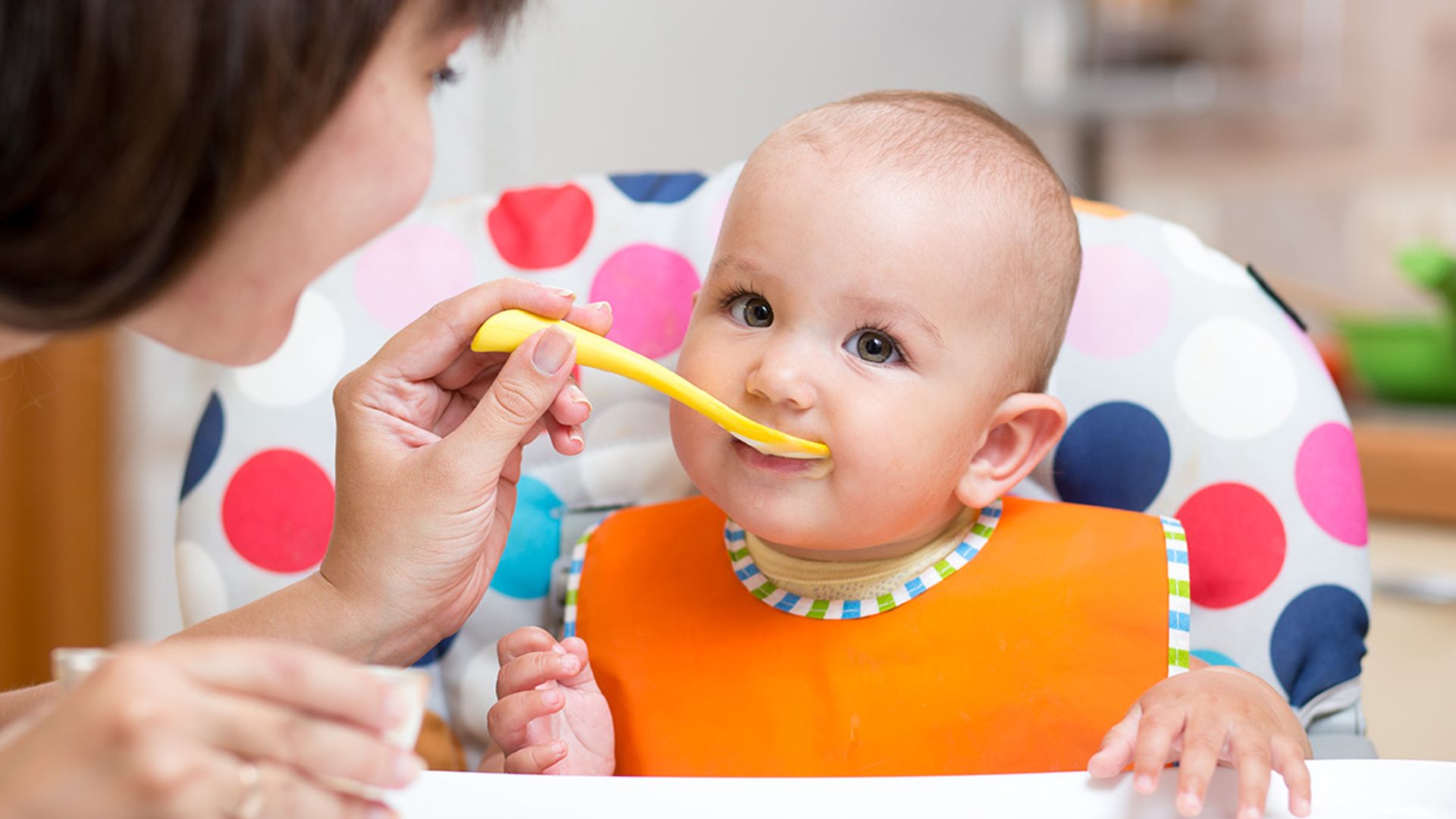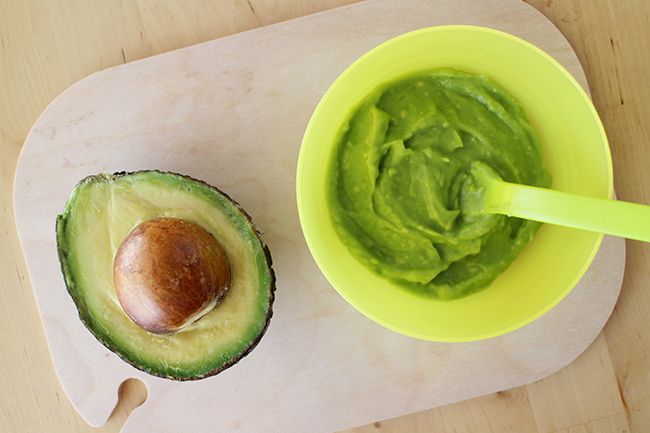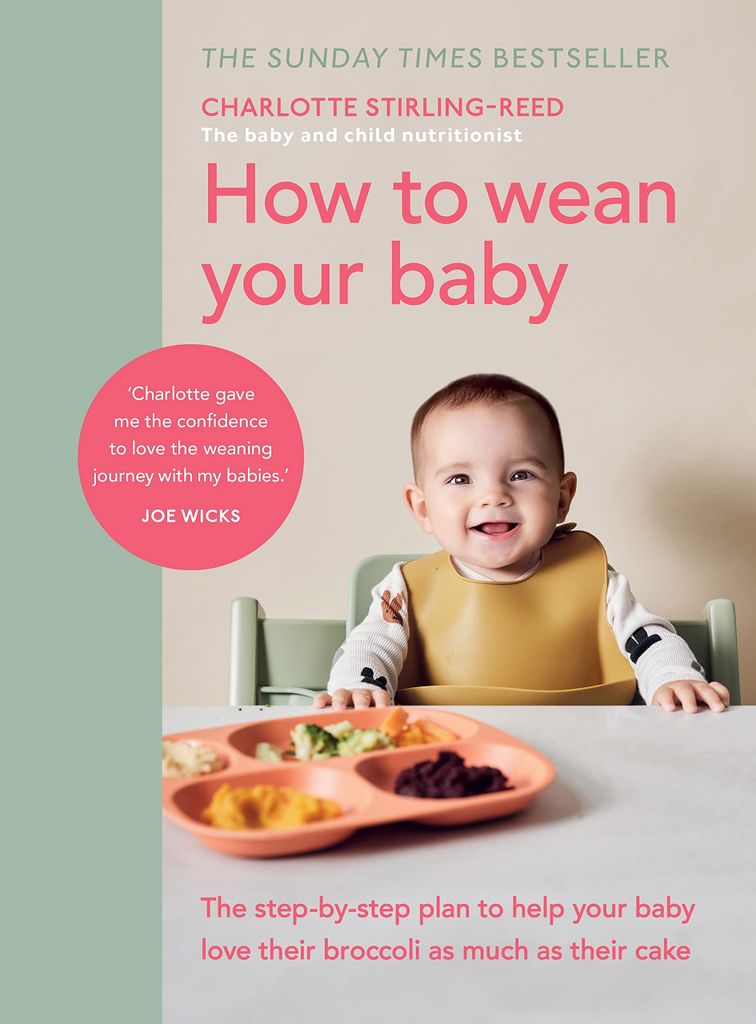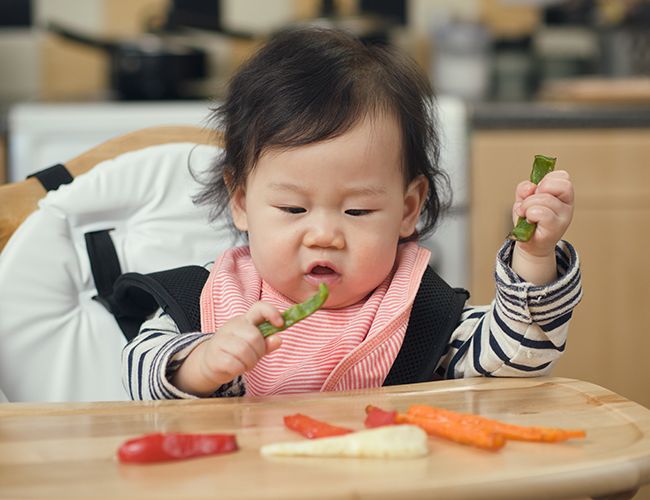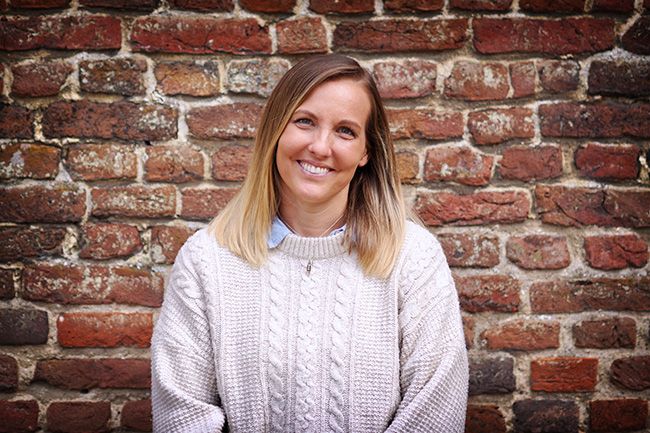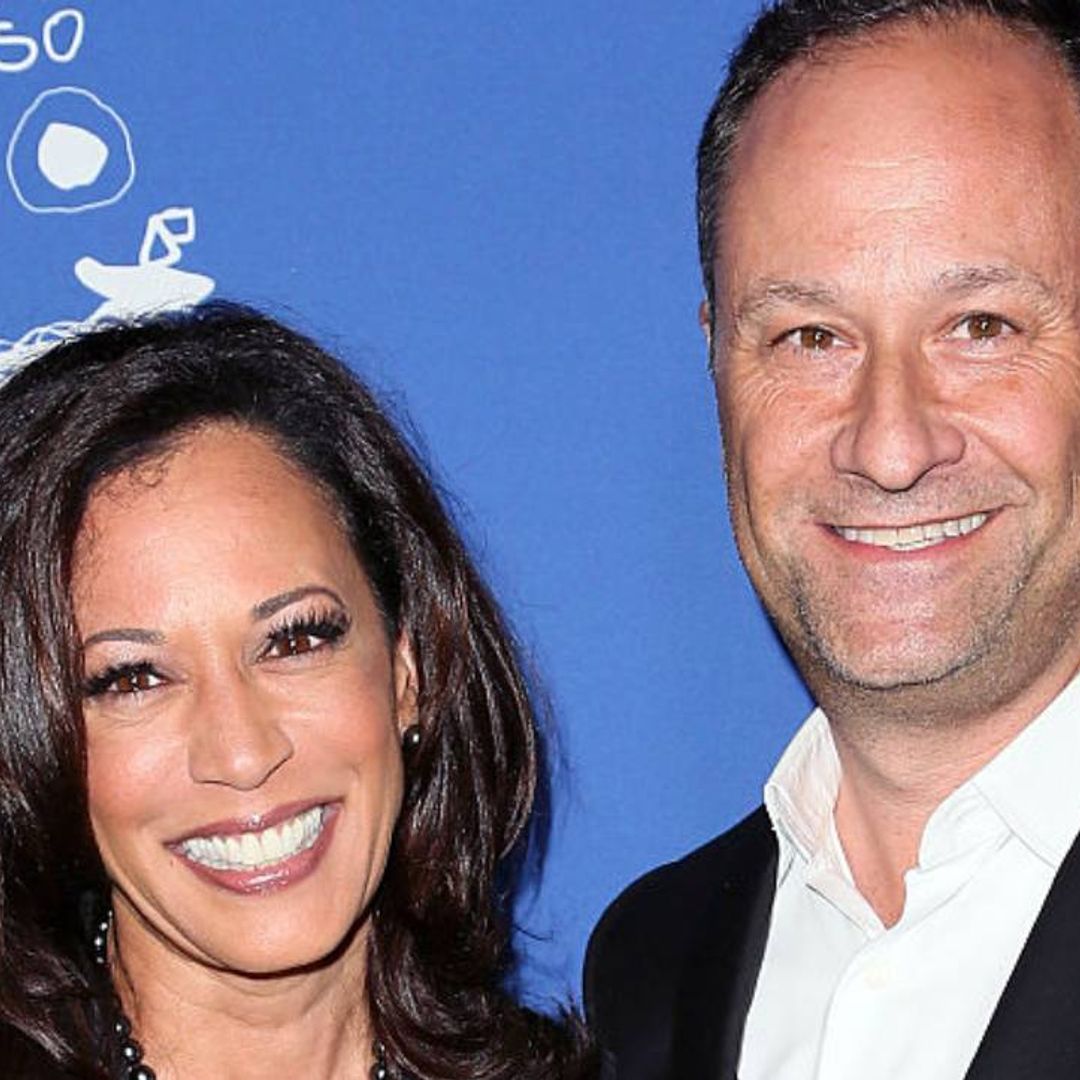Introducing your child to solid food is a big milestone for baby and parent. After months of your little one getting his or her nourishment from milk alone, it’s finally time to discover the world of food! If you’re a first-time parent or a mum or dad looking for some weaning advice, you're likely to have many questions on the subject. How do you know when your baby is ready for solids? What should you feed them? What are the dos and don’ts?
HELLO! consulted Charlotte Stirling-Reed, Baby and Child Nutritionist and author of How to Wean Your Baby, in collaboration with The Baby Show, for her top tips.
WATCH: British royal babies make their debuts
Charlotte says: "Starting solid foods can be a bit of a minefield for many parents – it always comes at a time when you feel like you’ve started to get to grips a bit more with parenting and then all of a sudden food is thrown into the mix.
MORE: 20 best sensory toys for babies and toddlers
"Babies are all so different with their weaning journeys too. Honestly, I've seen it all in my work and I also have two little ones who were completely different when it came to starting solid foods. Therefore there is no point in comparing, and, in reality, when it comes to helping babies move on to a more complex diet, it's largely about what works for your family and your baby. So do what works for you! See my weaning guide below."
When should I wean my baby?
Most babies will be developmentally ready for solid foods at 'around' 6 months of age. However, all babies are different and so it’s important to look out for the SIGNS of readiness, which are:
1) They can stay in a sitting position and hold their head steady.
2) They can co-ordinate their eyes, hands and mouth so they can look at the food, pick it up and put it towards their mouth, all by themselves.
3) The baby can swallow food. Babies who are not ready will push their food back out with their tongue, so they get more round their face than they do in their mouths.
Try to look out for these occurring at the same time as each other and not just as a one-off. Generally, this is likely to happen at around 6 months of age.
What foods should I start weaning with?
Babies are actually born with a preference for sweeter foods and so don't generally need much help to like and accept sweeter options such as apples and pears.
However, weaning is about exploring the new and some research suggests that starting baby's weaning journey by offering a variety of veggies can be a helpful way to go to help them to accept a wider range of tastes (not just sweet) early on.
This is the method I generally recommend and it’s referred to as 'Veg Led Weaning'. Veg Led Weaning simply means focusing on vegetables at the start of their weaning journey, and being sure to offer plenty of veggies (along with other foods) as your little one moves on to a more complex diet.
MORE: How to dress baby for sleep in cold weather
READ: When do babies start sleeping through the night?
How to start weaning
Try picking a different veg to offer each day for the first 10 days or so days of weaning and offering those more savoury and bitter flavours FIRST before moving on to more variety and some sweeter options.
Some great bitter, savoury and neutral flavour options to try include:
- Broccoli
- Potato
- Kale
- Green beans
- Cauliflower
- Avocado
- Courgette
- Spinach
You can offer most of these foods as mash, puree or as finger foods, depending on how you'd prefer to start the weaning process.
Some of them don't work well as a finger food, but you could always make a puree (e.g. kale) and use a potato or a floret of broccoli as a dipper, if your little one seems to really like their finger foods.
SHOP: Baby-proofing home essentials for mums and dads
How to wean your baby, £10, Amazon
SHOP NOW
How to introduce textured foods to baby
It's important to move through those textures fairly quickly to allow your little one to learn how to chew and swallow a variety of textures nice and early on. This is especially the case if you’re starting your baby with purees first.
Research shows it’s good to offer babies lumps and bumps in their food before around 9-10 months of age so they can learn how to swallow and cope with a variety of textures in their mouths.
The key is STEALTH when it comes to moving babies through textures!
Finger foods can help with this too and although it the idea of this can make plenty of families nervous, offering super soft finger foods that easily squidge between your finger and thumb is a great way to allow your baby to explore food, self-feeding and practise skills around eating.
Moving onto Next Steps
Once you've offered a nice variety of single veggie tastes (10 days or so), you can start to move on and build a variety into your little one's diet, nice and gradually.
Try to start building 'meals' by adding a combination of foods together from the different food groups (e.g. pasta with broccoli and beef mince), including:
- Starchy foods
- Veg AND fruits
- Protein and iron-rich foods
- Small amounts of dairy (huge amounts aren’t needed as babies under 12 months generally still have plenty of milk).
Iron-rich foods such as lentils, beans, pulses, tofu and meat, fish and eggs are important to start including soon after the first tastes of veggies. This is because babies need plenty of iron in their diets and this needs to come from the foods they are eating.
Are there any foods you should avoid when weaning your baby?
Whilst MOST foods are fine to offer your little one when they start weaning, there are a few foods to be aware of, and that are best avoided for babies under one.
- Sugar and Salt – whilst sugar and salt can be present in some of the foods we offer to babies, it's best to avoid adding them to their foods where possible.
- Honey – Honey isn't recommended for babies under one year of age as it can contain a bacteria that could lead to infant botulism – a very rare but serious condition.
- Undercooked or raw meat/fish – may contain bacteria which can cause food poisoning if not properly cooked.
- Choking risk foods:
- Whole nuts – these are a choking risk and shouldn’t be offered to babies – offer nuts as nut butter or finely ground or chopped.
- Whole grapes – offer grapes thinly sliced or remove the skin to make them a little easier for little ones to manage.
- Whole cherry tomatoes – these can be offered quartered
- Unpasteurised dairy and certain cheeses – These are fine to offer as long as they’re thoroughly cooked. If they’re not cooked, unpasteurised cheeses, as well as mould-ripened soft cheeses (e.g. brie or camembert) and soft blue-veined cheese (e.g roquefort) can contain a bacteria called listeria.
- Cow’s milk as a whole drink until 1 year – cow’s milk can be offered from six months in baby’s food, but not as a main drink. This is because cow’s milk doesn’t contain the right levels of fat, protein or energy for baby’s appropriate growth.
- Raw or lightly cooked eggs – make sure eggs are well cooked when offering to baby, UNLESS they are Red Lion Stamped. If they’re red lion stamped, it means the hens have been vaccinated against salmonella, and so they don’t need to be thoroughly cooked for babies.
- High fibre foods – Too much fibre can mean that babies fill up without getting the right mix of nutrients. You can offer wholegrains and fibre-containing foods, just try to balance them with a variety of carbohydrates and start slowly with high fibre foods such as beans and pulses.
RELATED: The genius baby weaning sets celebrities swear by
When should you introduce more meals to your baby?
Every baby is totally different and there's no "perfect" timeline for progressing through weaning. By around nine months (and it may be a lot earlier than this too), most babies will be on three meals – but don’t worry if your baby isn’t quite there yet.
Gradually introducing more meals can help to set up a routine and introduce the concept of mealtimes for your little one. Once they’re swallowing more and becoming a bit more competent with one meal, you can introduce another and then another. They don’t necessarily need to be eating huge amounts at each meal, but ideally they will start to get used to their routine and know what to expect from meals.
Charlotte Stirling-Reed shared her expert weaning tips
How should you introduce allergens when weaning?
Introducing allergens is something that many parents are, understandably, worried about during weaning. Here are a few tips for introducing common allergens to little ones:
- Only introduce one new allergen one at a time – this is to make sure that you can identify the cause of any potential reaction
- Start slowly with just a small amount of the allergen – e.g. a quarter to half a teaspoon, and gradually increase over a few days
- Once your baby has had the allergen without a reaction, aim to include it regularly (1-2x per week) in the diet
- Don’t introduce allergens to your little one if they’re unwell
- If your child has eczema, it’s best if their skin is in good condition before giving allergens. Speak to your GP about optimising treatment of eczema if emollients aren’t helping
- Aim to introduce the new food early in the day – e.g. breakfast time or mid-morning. This allows a few hours to be able to monitor baby and will ensure you’ve got time during the day to look out for a reaction
- Rubbing food onto your baby’s lip or skin is not a good test of an allergy, as they need to actually ingest the food to properly test for a particular allergy
What to expect when weaning
It's important to know that babies aren’t expected to simply gobble foods up at the start of the weaning journey.
READ: The one baby accessory loved by celebrity parents from Kim Kardashian to Chrissy Teigen
From your baby's perspective, there’s a lot going on when you start them on solid foods – new tastes, textures, smells as well as the behavioural and coordination aspects that come with learning how to eat. So allowing time and thinking of these first veggies as simply ‘tiny tastes’ can help.
Always remember that all babies will progress through weaning at different paces. The most important thing is to have fun, take the pressure off and focus on offering a variety of foods to your baby throughout their weaning journey!
For more weaning advice visit srnutrition.co.uk or Charlotte’s social media channels @sr_nutrition
The Baby Show is taking place from 3-5 March at ExCeL London. The Baby Show is the UK’s leading pregnancy and parenting event and will play host to the UK’s leading baby and parenting experts and guest speakers.
HELLO!'s selection is editorial and independently chosen – we only feature items our editors love and approve of. HELLO! may collect a share of sales or other compensation from the links on this page. To find out more visit our FAQ page
